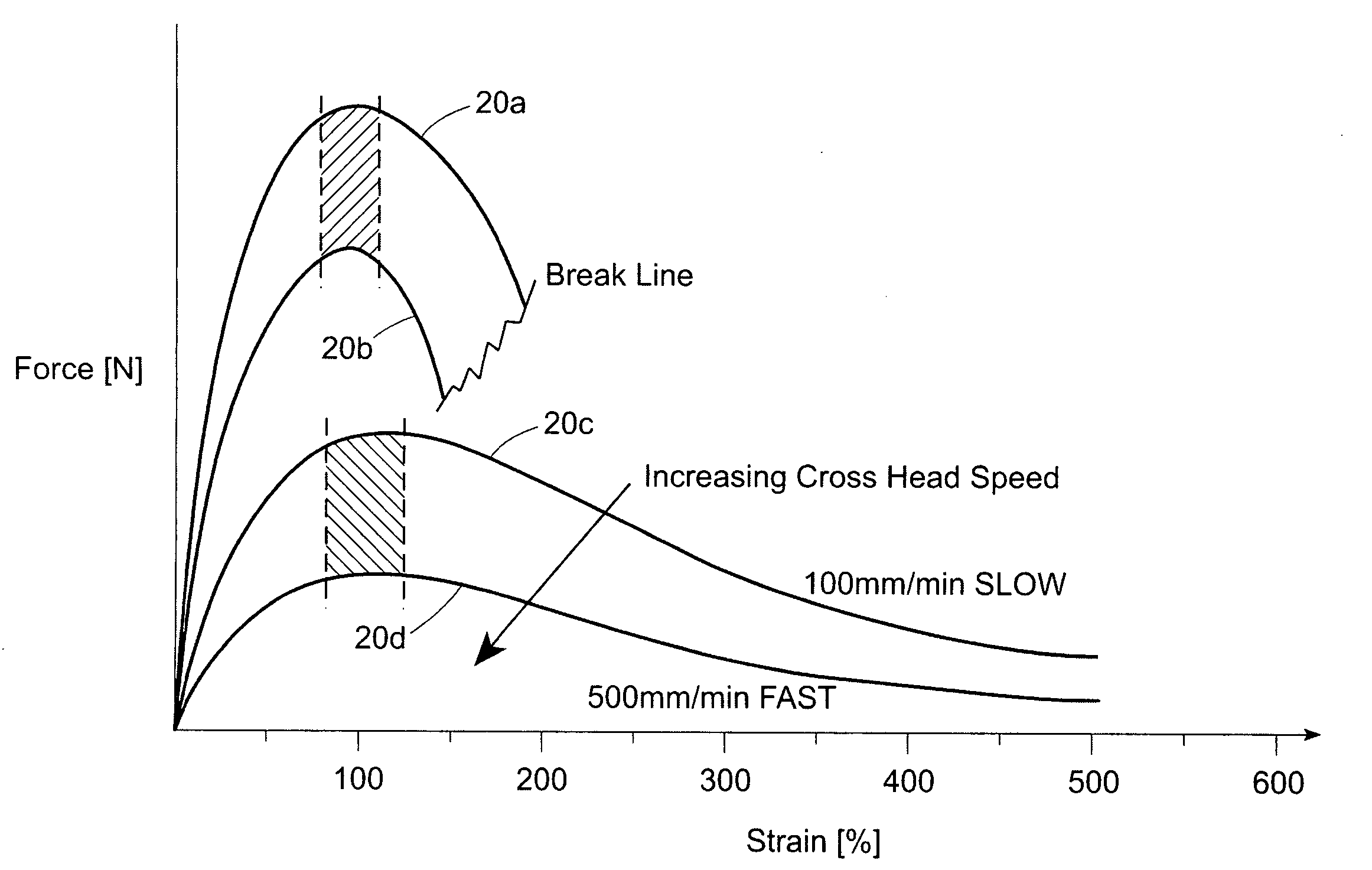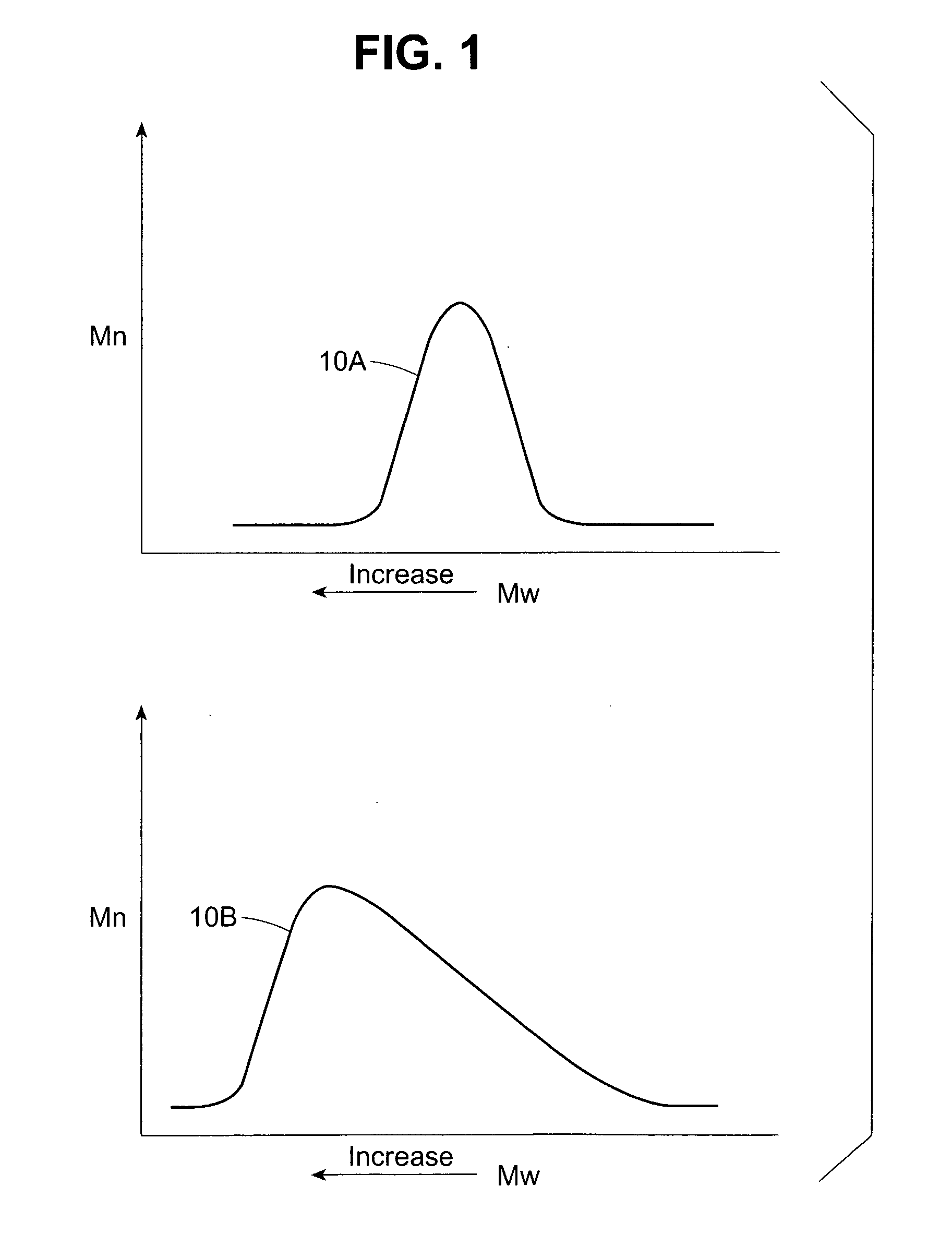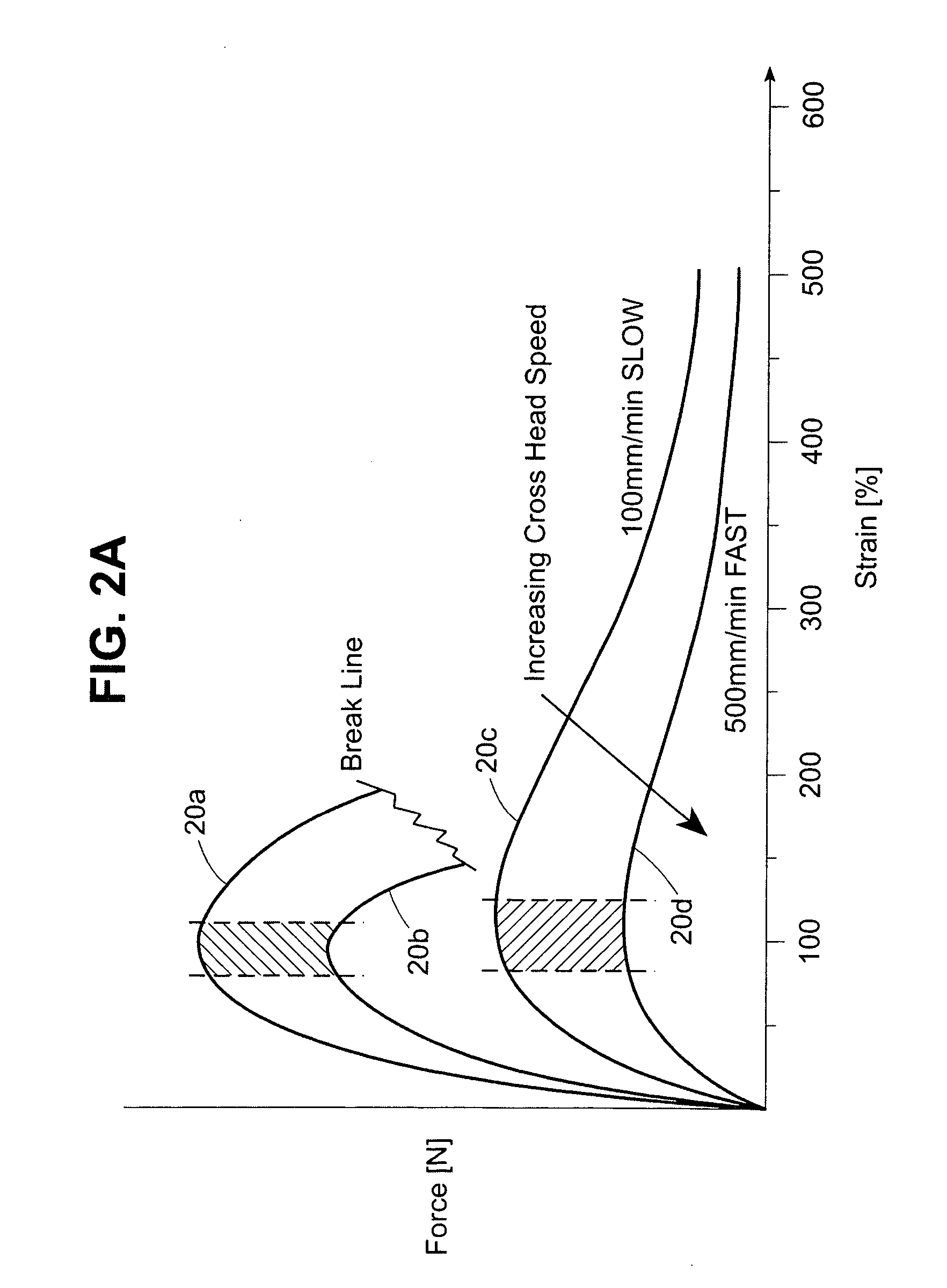Plastically deformable nonwoven web
- Summary
- Abstract
- Description
- Claims
- Application Information
AI Technical Summary
Benefits of technology
Problems solved by technology
Method used
Image
Examples
example i
[0099] A novel homopolymer of propylene was obtained from ExxonMobil Chemical Company under the designation PP 3164 E-1. The composition had a melt flow rate (MFR) of 23-25 grams / 10 minutes (ASTM D-1238, Condition L, 230° C. / 2.16 kg) and a polydispersity (Mw / Mn) of about 3. Continuous fibers were formed from the homopolymer and spunbond to form a spunbond non-woven web having a weight of 35 grams / square meter (gsm) according to the process described in Taylor, et al. U.S. Patent Application Publication No. 2002 / 0063364 A1, published May 30, 2002, and Bugada, et al. U.S. Pat. No. 6,569,945, both hereby incorporated by reference. The apparatus illustrated in Taylor was modified to use only a single hopper and a single extruder, with the spinning or production plates also being appropriately modified to produce a monocomponent spunbond rather than a multicomponent spunbond.
[0100] The main spinning process conditions were set at a quench air temperature of 14° C., an average fiber velo...
example ii
[0105] The procedure of Example I was repeated except that all tests were performed at a crosshead speed of 500 mm / minute and a grip distance of 0.5″.
[0106] The evaluation results are recorded in Table II. FIG. 8 illustrates the stress / strain graphs of typical specimens, with specimens #1 through 4 being the conventional homopolymer of polypropylene and specimens #5 through 8 being the novel homopolymer of polypropylene according to the present invention.
[0107] While the physical properties and characteristics of the typical specimens evaluated in Example II are not in 100% agreement with the evaluation results of Table I (for evaluations at the same crosshead speed and grip distance), the evaluation results of Tables I and II are within a reasonably anticipatable range taking into consideration the non-uniformity of the fabric which can lead to different evaluation results even for different samples of the same fabric roll.
example iii
[0108] The procedure of Example II was repeated, this time with all webs (both novel and conventional) having a weight of 15 gsm rather than 35 gsm.
[0109] The physical properties and characteristics are recorded in Table III. FIG. 9 illustrates the stress / strain graph of typical specimens, with specimens #1-4 being the conventional homopolymer of polypropylene and specimens #5-8 being the novel homopolymer of polypropylene according to the present invention. It will be appreciated that the graph correctly indicates that the conventional specimens #5-8 of the heavy 35 gsm material of Examples I and II broke at the higher elongations; but, due to limitations of the graphing equipment used, the graph incorrectly indicates that the conventional specimens of the lighter weight 15 gsm material did not show breakage, even at the higher elongations, although in fact there was effective rupture of such specimens.
PUM
| Property | Measurement | Unit |
|---|---|---|
| Temperature | aaaaa | aaaaa |
| Temperature | aaaaa | aaaaa |
| Temperature | aaaaa | aaaaa |
Abstract
Description
Claims
Application Information
 Login to View More
Login to View More - R&D
- Intellectual Property
- Life Sciences
- Materials
- Tech Scout
- Unparalleled Data Quality
- Higher Quality Content
- 60% Fewer Hallucinations
Browse by: Latest US Patents, China's latest patents, Technical Efficacy Thesaurus, Application Domain, Technology Topic, Popular Technical Reports.
© 2025 PatSnap. All rights reserved.Legal|Privacy policy|Modern Slavery Act Transparency Statement|Sitemap|About US| Contact US: help@patsnap.com



